Exploring the Depths of Corel Painter Software
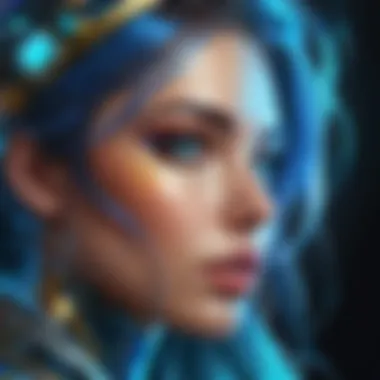
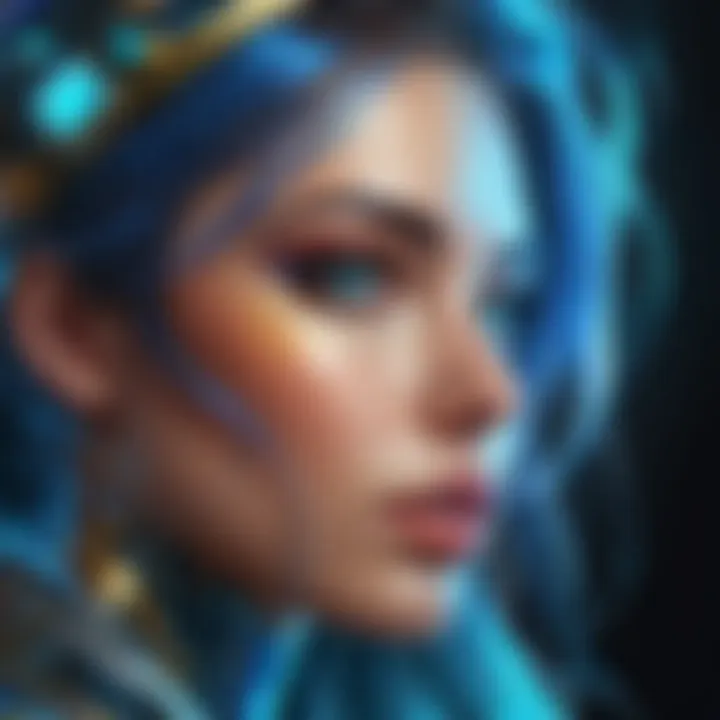
Intro
Corel Painter has carved its niche in the digital art landscape, emerging as a powerful ally for both aspiring artists and seasoned professionals. By simulating traditional painting techniques, it provides a rich canvas for creativity. This software stands as a testament to the capabilities of technology in fostering artistic expression.
As we explore Corel Painter, we will delve into its features, user experience, and even how it stacks up against its competitors. The aim is to shine a spotlight on how this software can transform the way users approach digital art, whether they’re just starting out or are already making their mark.
Software Overview
Features and Functionalities Overview
Corel Painter boasts a plethora of features tailored for artists. It enables users to replicate a range of media, from oils to watercolors, making it feel as if you were actually painting on canvas. Some standout tools include:
- Brush Variability: Over 900 brushes that can be customized, allowing artists to find their unique style.
- Textured Paper Options: Provides stunning backgrounds for artwork, mimicking the feel and appearance of real paper.
- Color Mixing: This tool mimics traditional paint stacking, giving users a seamless blending experience.
User Interface and Navigation
The user interface is designed with artists in mind. While it might seem overwhelming at first glance, a little bit of time spent exploring the workspace pays off. Navigation is enhanced by:
- Customizable Workspace: Users can tailor their setup according to their workflow preferences.
- Toolbox Accessibility: Important tools are handy, minimizing the time it takes to switch between functions.
Compatibility and Integrations
Corel Painter is equipped to run on Windows and Mac OS, allowing for flexibility across different systems. It offers compatibility with:
- Stylus Devices: Such as Wacom tablets, which enhance precision in artwork.
- Other Software: It integrates well with Adobe Photoshop and others, making it easy to bring elements from various sources into one cohesive art piece.
Pros and Cons
Strengths
- Unmatched Realism: The ability to mimic traditional techniques is a major draw.
- Endless Creativity: With numerous brushes and textures, the sky's the limit for users.
- Strong Community Support: A robust online forum aids users with tutorials and guidance.
Weaknesses
- Learning Curve: The wealth of features can intimidate beginners.
- Performance Issues: Some users have reported lagging with larger projects.
Comparison with Similar Software
When comparing Corel Painter to rivals like Procreate or Adobe Fresco, you see distinct differences. For instance, while Procreate offers excellent portability and simplicity for mobile artists, Corel Painter emphasizes deep, intricate tool sets suited for serious projects.
Pricing and Plans
Subscription Options
Corel Painter offers various pricing tiers:
- One-Time Purchase: Ideal for those who prefer ownership without ongoing costs.
- Subscription Model: This provides access to the latest updates and new features regularly.
Free Trial or Demo Availability
Before committing, aspiring users can take advantage of a 15-day free trial to explore its functionalities. This allows potential buyers to grasp whether the software fits their artistic needs.
Value for Money
Taking into account the extensive features and support from the Corel community, many users find that it delivers solid value relative to what you get in terms of creative power.
Expert Verdict
Final Thoughts and Recommendations
Corel Painter stands tall among digital art software. Its advanced tools and functionalities certainly justify a closer look, especially for those serious about their craft. Artists willing to invest time will find it a valuable toolkit.
Target Audience Suitability
This software resonates well with professional artists or advanced students in art. Beginners may benefit, but some prior knowledge can help smooth the initiation phase.
Potential for Future Updates
As graphics technologies evolve, it’s reasonable to anticipate that Corel Painter will continue to refine its tools and introduce new features catering to emerging trends and user requests.
"Art is not freedom from discipline but disciplined freedom." This quote by André Gide summarises how Corel Painter embraces creativity within structure.
Preamble to Corel Painter
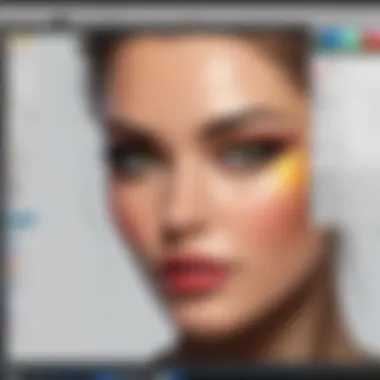
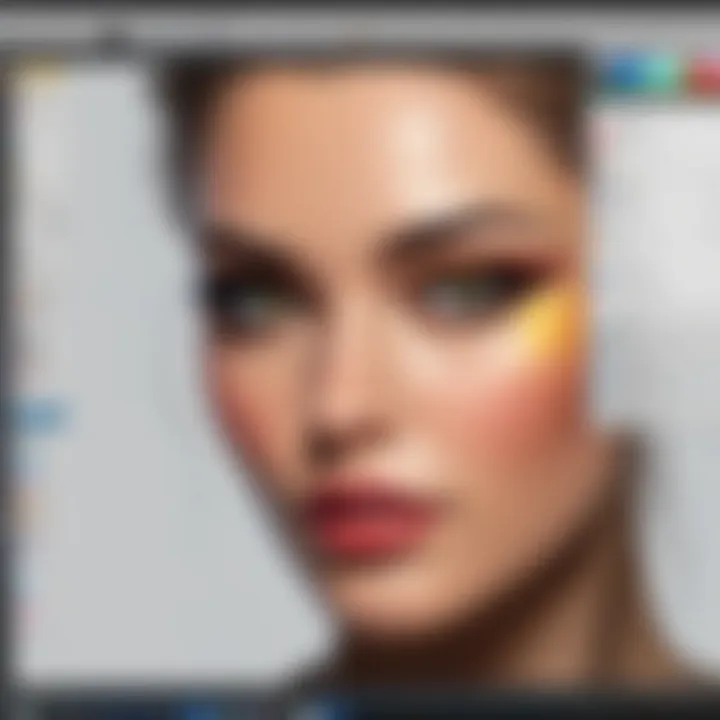
In the ever-evolving landscape of digital art, Corel Painter has carved out a distinct reputation, becoming a go-to tool for those seeking to replicate the nuances of traditional art forms through a digital lens. Understanding Corel Painter involves more than just familiarizing oneself with its myriad features; it also encompasses recognizing its significance in the wider artistic community, where creativity and technology intersect.
Artists today are often caught between the realms of traditional and digital techniques. Corel Painter offers a bridge—allowing users to explore various mediums and styles without the physical constraints of canvas, brushes, and paint. Furthermore, what makes Corel Painter particularly vital for artistic expression is the robust community and resources surrounding it, which continually inspire and inform users at all skill levels.
Within the context of this article, the exploration of Corel Painter begins by delving into its features, the evolution of its software, and a layout of its user interface. These elements will serve not just as a guide for newcomers, but as a nuanced canvas for seasoned artists looking to enrich their toolkit. Thus, the aim is not just to detail functionalities, but also to illuminate the potential these tools unlock for creative pursuits.
Overview of Corel Painter
Corel Painter is fundamentally a digital painting program designed to mimic traditional media, which can be quite transformative for digital artists. It offers an extensive collection of brushes, textures, and palettes that replicate the feel and look of oil paints, watercolors, pastels, and more. While other software may offer painting tools, Corel Painter takes it a step further; it allows for a depth of customization that can cater to individual artistic styles.
Key Features of Corel Painter:
- Natural-Media Brushes: The software features a vast array of brushes that don't just imitate oil or watercolor but also respond to pressure and tilt, providing a more authentic painting experience.
- Customizable Workspaces: Users can modify their interface and tool palettes to suit their working style, making it easier to navigate through complex projects.
- Texture Painting: Corel Painter allows for in-depth texture manipulation, enabling artists to create intricate layers that add depth to their work.
For those diving into digital art for the first time, Corel Painter can feel overwhelming, with its multifunctional landscape. However, the rewards for this initial investment of time can be significant, often leading to breakthroughs in creative exploration.
Evolution of Corel Painter Software
Corel Painter has undergone numerous transformations since its inception in 1991, rapidly adapting to new artistic demands and technological advancements. The software started out primarily as a relatively straightforward tool but gradually incorporated features that enhanced usability while expanding its range of creative options.
- Initial Launch: The first iteration aimed to provide a straightforward framework for painters looking to create digital works.
- Introduction of RealBristle Technology: This feature brought about a more authentic painting experience by allowing for a more realistic brush behavior, responding intuitively to pressure and angle.
- Continued Updates: Over the years, Corel introduced additional functionalities such as auto-painting options and new brush types, keeping pace with emerging trends in digital artistry.
The software's adaptability is npt only reflected in its features but also in the community support it cultivates. Whether through online forums or social media platforms like Reddit, artists share tips, techniques, and showcase their work, fostering a sense of collaboration and innovation that keeps Corel Painter relevant.
"The evolution of Corel Painter is a testimony to how technology can enhance artistic expression while retaining the soulful aspects of painting."
As we continue to explore Corel Painter throughout this article, it’s crucial to understand that this software not only reflects the changing paradigms of art-making but also serves as a tool for artists to express their own evolving voices.
Corel Painter Features
In the diverse world of digital art software, the features of Corel Painter hold significant weight. This software isn't just another option on the shelf; it boasts a collection of powerful tools that set it apart from the crowd. Every artist, from a weekend doodler to a professional illustrator, can benefit from understanding these unique capabilities.
The features of Corel Painter are crafted not only to mimic traditional art forms but also to enhance the creative process through digital means. Artists can create works that radiate authenticity. This article delves into three standout elements: Natural-Media Brushes, Customization Options, and Texture Painting Abilities. Each aspect caters to different needs and preferences, ultimately making it a versatile tool for expression.
Natural-Media Brushes
Corel Painter’s Natural-Media Brushes are a game-changer in the realm of digital painting. These brushes simulate the look and feel of traditional painting instruments like oils, watercolors, and pastels. This is not just a gimmick; the technology behind them is sophisticated, allowing artists to experience a tactile engagement similar to working with physical materials.
Painters can adjust brush settings—size, opacity, flow, and blending options—offering a high degree of control over their artwork. Each stroke can have a unique character, influenced by pressure sensitivity and tilt. This level of intricacy allows for the creation of pieces that feel alive and organic.
For those who enjoy experimenting, these brushes are worth their weight in gold. You can create textured strokes reminiscent of a brush dragging across canvas or explore the fluidity of watercolor washes. In a world where digital art can feel flat or lifeless, Corel Painter's brushes bring depth and soul.
Customization Options
When discussing customization in Corel Painter, one cannot overlook how personal this software can get. It’s about making the tools work for you, not the other way around.
Artists have the freedom to customize each brush. You can modify settings to create a unique tool that behaves exactly as you want. Want a brush that mimics the way your favorite oil paints blend? No problem. There's also the ability to create custom palettes and workspace layouts. This level of personalization means that a user can organize their digital studio in a way that enhances productivity and encourages creativity.
Additionally, there are various presets that can act as starting points. This is particularly beneficial for those who might be new to the software or want to save time on settings before diving into the nitty-gritty of creating. The flexibility invites every artist to step outside their comfort zone and try new techniques without the apprehension of starting completely from scratch.
Texture Painting Abilities
Texture plays an often-overlooked role in the dimension of an artwork. Corel Painter's Texture Painting Abilities are impressive, enabling artists to overlay textures on their paintings, granting them a unique depth that adds visual interest.
Whether you want to recreate the appearance of canvas grain or the texture of old paper, you have endless options. Artists can layer textures, which can influence how colors interact with each other, resulting in a multi-faceted final piece. Think of it as not just painting but assembling a complex tapestry of visual experiences.
Moreover, the unique Texture Sensing feature allows you to create texture variations based on the surface of your brushes. This means that what you see and feel in real life can be translated into the digital canvas.
These texture capacities set Corel Painter apart from other software. They empower artists to elevate their creations and stimulate emotions within the viewers, lending a real beauty to pixels on the screen.
"Corel Painter’s features are not just tools; they are extensions of an artist's hand, transforming visions into realities."
By diving deep into the features of Corel Painter, users will find themselves equipped with the capabilities necessary to push their artistic boundaries and explore new dimensions of their work.
User Interface Analysis
Understanding the user interface of Corel Painter is not merely about aesthetics or arrangement; it plays a vital role in how artists interact with the software. A well-designed user interface (UI) enhances creativity by minimizing the friction between thought and action. In the fast-moving world of digital art, having an intuitive interface can significantly influence an artist's workflow, enabling them to focus more on their craft rather than wrestling with menus.
A few key factors highlight the importance of a comprehensive UI analysis:
- Intuitiveness: The more straightforward a software is, the less time users spend learning it. Corel Painter aims to create an environment where users can swiftly grasp the functionality of tools and palettes, allowing a smoother transition from idea to execution.
- Customization: A flexible UI that users can modify according to their needs also enhances productivity. Artists working in different styles might prefer various palettes or tool arrangements, and Corel Painter accommodates these preferences.
- Accessibility: It’s crucial for artists to navigate easily within the software without excessive scrolling or searching. A thoughtful layout ensures that essential tools are just a click away, minimizing distractions during the creative process.
Overall, a well-thought-out user interface brings not only convenience but can also be a source of inspiration within a digital workspace, encouraging experimentation and artistic exploration.
Layout and Navigation
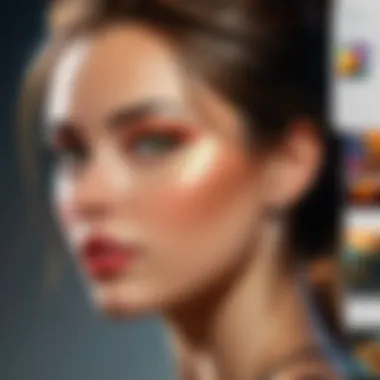
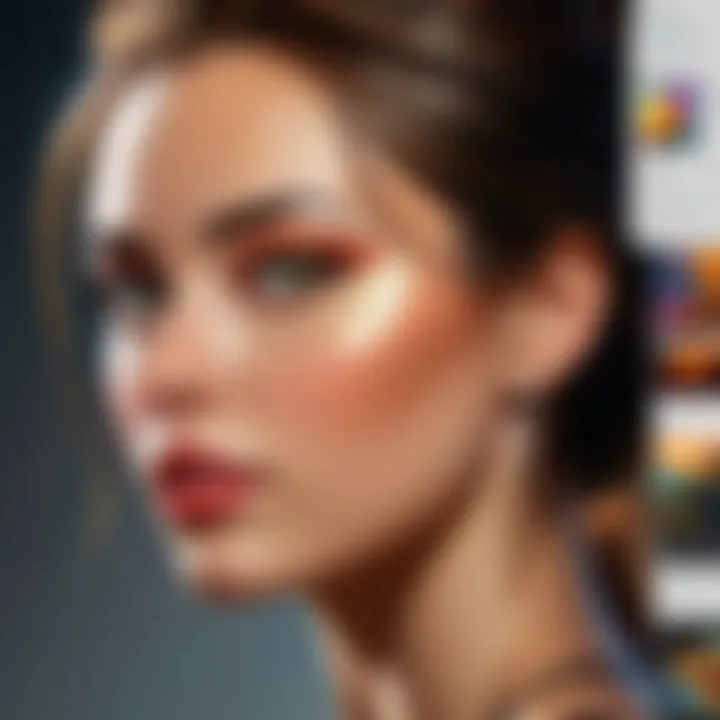
The layout and navigation of Corel Painter stand out due to its highly configurable workspace. Artists can arrange tools, color palettes, and menus to suit their personal preferences. This adaptability makes for a welcoming environment, especially for newcomers who might find other software daunting.
When you first launch Corel Painter, the default layout presents a blend of essential tools and panels. Users can:
- Dock or float panels: This option allows you to set up your workspace in a way that feels most natural. Some artists prefer a clean, uncluttered view, while others like to have multiple tools visible for quick access.
- Use keyboard shortcuts: Navigating through the software can be achieved efficiently using predefined keyboard shortcuts. This touch of ergonomic design helps power users navigate speedily, keeping workflow fluid.
Emphasizing good design, Corel Painter incorporates thoughtful visual cues that guide user actions, leading them seamlessly through projects with minimal downtime.
Toolbox Exploration
Corel Painter's toolbox is one of the most robust elements of its user interface, packed with versatile tools meant to emulate traditional mediums. Each tool is designed to be easily accessible and customizable based on the artist's needs.
Within the toolbox, users will find:
- Brushes: This isn't just a simple paintbrush. Corel Painter offers a myriad of options ranging from oil and watercolor brushes to more experimental ones like textured and particle-based brushes. Artists can adjust size, opacity, and blending modes easily.
- Selection tools: Proper selection can drastically alter project outcomes. Corel Painter provides a varied set of tools, allowing for precision in artwork adjustment. The cropping and transforming options encourage greater control over composition.
- Palette systems: With the possibility of customizing color palettes and setting favorite colors for quick access, artists can maintain their preferred hues without the hassle of repeatedly searching.
"The tools are not just a means to create; they are an extension of the artist's hand."
This toolbox also includes options to save custom tools or sets. This feature is ideal for artists creating in series or collections, helping maintain consistency across various pieces.
Comparative Study with Other Art Software
The digital art landscape is full of programs that cater to various artistic needs, and Corel Painter holds its own in a competitive arena. By comparing it with other prevalent art software, such as Adobe Photoshop and Procreate, one can better appreciate its unique offerings. This discussion serves not only to clarify the differentiating aspects of Corel Painter but also to highlight potential advantages or disadvantages as they relate to user preferences and project requirements.
Corel Painter vs. Adobe Photoshop
Drawing parallels between Corel Painter and Adobe Photoshop is almost unavoidable when looking at digital art tools. Each has carved out its niche within the art community, yet they serve somewhat different purposes. While Adobe Photoshop is widely regarded as the industry standard for photo editing and graphic design, Corel Painter leans heavily into mimicking traditional art techniques.
To better grasp their distinctions, consider the following aspects:
- Brush Variety: Corel Painter excels with its natural media brushes, allowing for a diverse range of painting techniques. This software caters specifically to artists seeking to replicate the feel of oil, watercolor, or other traditional mediums. In contrast, Photoshop's brushes are often more geared towards graphic design, with extensive capabilities for image manipulation and retouching.
- User Experience: The interfaces of both programs differ significantly. Corel Painter's UI is built around the artist's experience, emphasizing easel-style workflows which can be more intuitive for painters. On the other hand, Photoshop features a more complicated interface, which can be overwhelming for those focusing solely on painting. The familiarity many graphic designers have with Photoshop can make it a go-to choice for mixed media projects, while pure painters may find solace in Painter’s layout.
- Learning Curve: If we look at accessibility, Corel Painter demands some time to grasp fully due to its vast features dedicated to artistic freedom. Conversely, Photoshop might be considered easier for newcomers, especially those with graphic design backgrounds. Ultimately, the choice could depend on an artist’s primary focus.
Remember, both tools have their strengths, and choosing one over the other is often a matter of specific project needs.
Corel Painter vs. Procreate
As we pivot our attention to Procreate, it's essential to recognize that this application primarily targets iPad users, providing simplicity, portability, and a tactile drawing experience. Comparing Corel Painter and Procreate showcases the evolution of digital art applications from desktop to mobile platforms.
Important points of contrast include:
- Platform and Accessibility: Corel Painter is a powerhouse designed for desktop environments, allowing expansive canvases and a plethora of tools at an artist’s fingertips. Procreate, with its intuitive touch interface, thrives on mobile devices, which makes it a handy solution for artists on-the-go. The essence of this choice largely depends on how and where an artist prefers to create.
- Feature Set: Corel Painter offers extensive customization options for brushes and textures, while Procreate excels in its immediacy and speed. Artists who love to experiment with various brushes will appreciate how Corel Painter can assist them in obtaining a realistic painting feel. Conversely, Procreate’s user base revels in its ease of use and the availability of one-tap actions that simplify workflows.
- Community and Resources: As Procreate gains traction among artists, its community has grown rapidly with a wealth of tutorials and sharing platforms. Compared to the more established Corel Painter, which has resources built over years, Procreate’s ecosystem may feel vibrant and fresh, filled with enthusiastic newcomers learning together.
In summary, choosing between Corel Painter, Adobe Photoshop, and Procreate largely hinges on an artist's workflow preferences and the specific nature of their projects. While Corel Painter shines in traditional styles, Photoshop's strength in editing and Procreate's charm on mobile devices continue to anchor them in their respective spheres.
In this ever-evolving digital art arena, having a comprehensive understanding of software options equips artists with the insight needed to cultivate their creative talents.
Practical Applications of Corel Painter
Understanding the practical applications of Corel Painter is tantamount to unlocking its full potential in the domain of digital art. With its powerful capabilities, this software transcends simple illustration; it enables artists to channel their creativity into various forms and styles. Whether you are crafting detailed illustrations for a client, devising concept art for video games, or recreating classic techniques digitally, Corel Painter has tools designed to facilitate these tasks effortlessly. Its versatility means that artists of all levels can find ways to apply their skills effectively, reaping both personal satisfaction and professional rewards.
Illustration and Concept Art
When it comes to illustration and concept art, Corel Painter shines brightly in a crowded field. The software offers a wide range of brushes that mimic traditional media, allowing artists to create lifelike textures and effects. For a concept artist, these tools are invaluable, as they help in visualizing ideas swiftly and effectively.
One practical aspect of Corel Painter in this area is its ability to create a comprehensive mood board using textured brushes and layering techniques. This allows artists to experiment with colors and forms quickly, alleviating some of the pressure during the conceptualization phase.
- Ideal Brush Types: The Watercolor and Oil brushes are particularly popular among illustrators, providing realistic strokes that can be adjusted in size and opacity.
- Versatility in Workflow: Corel Painter integrates seamlessly with other platforms like Adobe Photoshop, which makes the transition between different tools straightforward. Many artists create their base sketches in Photoshop, then import them into Painter to develop the finer details.
- Immediate Feedback: The feature that allows for real-time adjustments means that artists can iteratively refine their creations. This is key, especially in concept art where ideas can morph rapidly in response to feedback.
Overall, utilizing Corel Painter for illustration and concept art is an excellent choice for those aiming to push their creative boundaries while maintaining a professional edge.
Fine Art and Traditional Techniques
Corel Painter is more than just a tool for modern illustrations; it is deeply rooted in the traditions of fine art. Artists wanting to explore classical techniques find a welcoming environment within this software. It allows for the recreation of oil paintings, pastels, and other historical techniques that have defined the art world for centuries.
Many users appreciate how Corel Painter supports a range of painting styles, providing flexibility that mirrors traditional mediums:
- Emulation of Traditional Media: Artists can emulate the feel of watercolors, acrylics, or even charcoal drawing, giving them the freedom to experiment without the constraints of physical materials.
- Layering and Blending Options: The software's layering system is robust. Artists can layer colors much like they would on canvas, blending them together to achieve complex hues and tonal variations. This can be done with ease through simple gestures, which saves time.
- Artistic Freedom: Furthermore, the customizable brush settings mean that each stroke can have a unique texture that resembles natural techniques. For artists aiming to transition their traditional skills into the digital realm, this software offers an exceptional platform to bridge that gap.
The ability to replicate and innovate on traditional techniques places Corel Painter in a unique position. By combining modern convenience with classical artistry, it nurtures an environment where artists can grow, explore, and ultimately redefine what they can create.
"Corel Painter does not just imitate the old but reinvents it for the new generation of artists."
Optimizing Corel Painter for Artistic Flow


Optimizing Corel Painter is not just a choice; it's a necessity for artists who want to channel their creativity efficiently. The software offers a dizzying array of tools and features. Without a streamlined workflow, one might find themselves more frustrated than inspired. This section focuses on creating an artful atmosphere where you can rave in colors without any hiccups, ensuring that every brush stroke reflects your vision.
Essential Shortcuts and Workflow Tips
In the vast landscape of Corel Painter's capabilities, knowing your way around can save you ample time and enhance your creative process. One minute spent on a shortcut can mean the difference between getting an idea down in two minutes instead of ten.
Here's a shortlist of essential shortcuts that can amp up your artistic flow:
- B: Select the Brush tool quickly.
- E: Switch to Eraser in a flash.
- Ctrl + Z: Undo that last stroke, we all make mistakes!
- Shift + [ or ]: Scale your brush size, allowing for a quick transition between large and fine details.
- Ctrl + Alt + Z: This shortcut helps step back through multiple actions, giving you breathing room to explore different options.
Additionally, consider setting up a custom palette. It's like having your favorite paints right where you can see them. Drag and drop your most-used brushes into a dedicated space, so they're just a click away. Not only does this create a neat workspace, but it also manifests a personalized touch that can inspire fresh ideas.
The organization of your workspace also plays a crucial role. By grouping related tools, whether they are brushes, textures, or effects, you keep your focus intact and can pivot from one task to another with minimal friction.
A great practice is to set up multiple canvases. Utilize Corel Painter's ability to open several documents at once. This way, you can experiment with textures or colors without losing your original piece. Having options adds a sense of freedom; each stroke can be a new possibility.
Combining Tools for Diverse Textures
Textures are the life or death of a painting, often transforming a flat image into something full of depth. Corel Painter’s brush engine is robust; it thrives on the idea of merging various tools to achieve stunning results.
When mixing tools, start with your base brush but don’t hesitate to get creative.
- Use a Watercolor Brush to lay down washes, then switch to an Oil Brush for detailed highlights. This combination can capture a perfectly blended sunset or a rich landscape with ease.
- Another effective combo is pairing a Palette Knife with a Texture Brush. This needling can create dynamic patterns that jump off the page, pulling viewers into your work.
- Explore Impressionist Brushes for broader strokes, then return to your precise brushes for detailing. This layering can give your work a lush quality that you’d be hard-pressed to replicate otherwise.
Don’t forget about the Clone Source feature. It allows for repeated patterns and textures to be effortlessly integrated into your canvas. Imagine creating a vast field of flowers without manually painting each one; this can save tons of time and energy.
Combining tools effectively means not just relying on the default settings, though. Experiment with the brush controls to alter opacity, size, and blending modes. You might stumble upon something that feels revolutionary for your style.
Corel Painter Community and Resources
The Corel Painter community represents a vibrant ecosystem where artists converge to share insights, skills, and experiences with one of the most powerful digital painting tools. This flourishing community is not just a support group; rather, it is a rich environment nurturing creativity through shared knowledge and collective growth. In this section, we explore the importance of forums and online discussions, as well as tutorials and learning resources available to users, underlining how these assets contribute significantly to the overall user experience of Corel Painter.
Forums and Online Discussions
One of the standout features of the Corel Painter community is its various forums where users can interact, debate, and exchange ideas. These platforms, such as those found on reddit.com, house conversations that can be both enlightening and practical. Participants can ask questions that range from the technical—like how to fix a stubborn brush—not to mention strategies for achieving that perfect digital texture.
Engaging in online discussions brings multiple benefits.
- Immediate Help: Users can receive responses from fellow artists almost instantaneously, connecting those who may share similar hurdles or curiosity about getting the best out of tools.
- Networking Opportunities: These spaces help foster connections, leading to collaborative projects or constructive critiques that are invaluable to any artist’s growth.
- Resource Sharing: Members often share personal tips, modified brush settings, or even links to helpful content that enriches the overall learning experience.
"The best ideas come from collaboration. Discussion multiplies knowledge, ignites creativity, and opens doors you never knew existed."
These forums, saturated with varied experiences and perspectives, work tirelessly to promote a sense of belonging among users—whether they are beginners finding their footing or seasoned artists mastering intricate techniques.
Tutorials and Learning Resources
When it comes to mastering Corel Painter, firsthand practice is essential, but additional learning resources sail alongside to bolster that hands-on experience. Tutorials, offered by both the Corel team and enthusiastic users, cover everything from the essentials to advanced techniques. Instructional content can be found in numerous formats:
- Video Tutorials: YouTube is a goldmine. Many artists create step-by-step guidance on specific techniques or tools, allowing for visual learning.
- Written Guides: Websites, including britannica.com and dedicated Corel Painter forums, host comprehensive articles that delve into detailed methodologies for art creation.
- Webinars and Live Shows: Corel often hosts events where seasoned artists showcase their workflows, providing invaluable insights direct from experts with years of practical knowledge.
The importance of these resources can’t be understated. They offer guidance to navigate through the potentially overwhelming array of tools in Corel Painter. For novices, this means a softer landing into digital painting. For experienced painters, these resources provide new techniques that can refresh their approach and inspire innovation in their work.
All these connections to tutorials, combined with community discussions, drive both personal and artistic growth. Users can not only become proficient in Corel Painter but also understand the nuances that can elevate their art, putting them on a path toward mastery.
End: The Value of Corel Painter in Digital Art
In the ever-evolving landscape of digital artistry, Corel Painter consistently stands tall as a powerhouse, fostering creativity and exploration. This software has become more than just a tool; it’s a canvas where dreams and ideas come to life. When discussing the value of Corel Painter in the digital art domain, several key elements come into play that sets it apart from its contemporaries.
First and foremost, the software's robust feature set is essential. The natural-media brushes allow for a tactile sensation that resonates with traditional artists while providing the advantages of digital editing. Artists can effortlessly blend colors and textures in ways that mimic real-world media, such as oil, watercolor, and acrylics, turning every project into a deeply satisfying experience.
Moreover, customization abounds within Corel Painter. Creatives have the ability to shape and mold their workflows, making the software truly their own. From brush settings to palettes, every user can tailor the workspace to align with their individual style and preferences. This personal touch is paramount to maximizing productivity and enjoyment.
Another significant benefit is the vibrant community that surrounds Corel Painter. Artists from all over the world share their techniques, display their works, and foster an atmosphere of learning and inspiration. Through forums like Reddit and platforms like Facebook, users can find camaraderie and support that enriches their artistic journey.
"A tool is only as good as the person wielding it; Corel Painter empowers users to push boundaries in their craft."
Lastly, Corel Painter keeps its finger on the pulse of technological advancements. With updates and new features, the software adapts to meet the needs of its users, ensuring it remains relevant in a fast-paced digital environment.
Final Thoughts on Creative Potential
When pondering the creative potential unlocked by Corel Painter, one sees a platform where imagination reigns. The software plays an integral role in enabling artists to express themselves more freely, breaking the conventional boundaries that might inhibit creativity. The ease of experimenting with styles and techniques encourages bold decisions and innovation.
In fact, many artists note that Corel Painter has dramatically altered their artistic journey, allowing them to explore realms they hadn’t considered before. The software acts as a facilitator, granting artists the freedom to experiment without the concern of wasting material. Instead of fearing failure, artists are emboldened to take risks, leading to breakthroughs and unique creations.
Future of Corel Painter Software
Looking ahead, the future of Corel Painter appears bright. As technology continues to progress, one can expect enhancements that will push digital art even further into uncharted territories. Potential developments may include deeper integration of artificial intelligence, allowing for even smarter brush functionalities or an inclusive virtual reality painting experience that can redefine the way artists interact with their work.
Additionally, staying connected with user feedback is crucial. Corel can continue to listen to its dedicated community and iterate based on their insights and suggestions, crafting updates that resonate with user needs.
For more on Corel Painter's community and resources, check out relevant discussions on Reddit or discover new techniques on Wikipedia.







